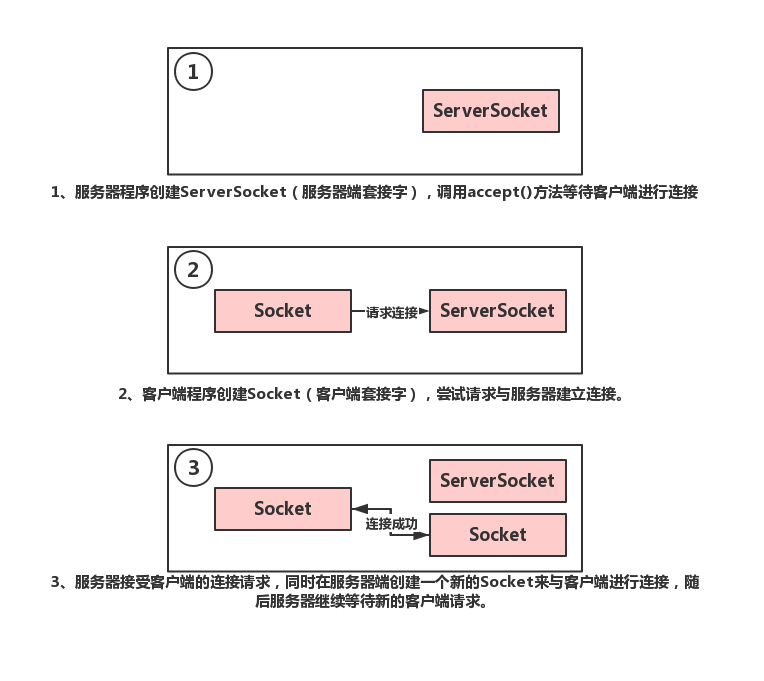Python3標準庫之functools管理函數的工具詳解
functools模塊提供了一些工具來調整或擴展函數和其他callable對象,從而不必完全重寫。
1.1 修飾符functools模塊提供的主要工具就是partial類,可以用來“包裝”一個有默認參數的callable對象。得到的對象本身就是callable,可以把它看作是原來的函數。它與原函數的參數完全相同,調用時還可以提供額外的位置或命名函數。可以使用partial而不是lambda為函數提供默認參數,有些參數可以不指定。
1.1.1 部分對象第一個例子顯示了函數myfunc()的兩個簡單partial對象。show_details()的輸出中包含這個部分對象(partial object)的func、args和keywords屬性。
import functoolsdef myfunc(a, b=2): 'Docstring for myfunc().' print(’ called myfunc with:’, (a, b))def show_details(name, f, is_partial=False): 'Show details of a callable object.' print(’{}:’.format(name)) print(’ object:’, f) if not is_partial: print(’ __name__:’, f.__name__) if is_partial: print(’ func:’, f.func) print(’ args:’, f.args) print(’ keywords:’, f.keywords) returnshow_details(’myfunc’, myfunc)myfunc(’a’, 3)print()# Set a different default value for ’b’, but require# the caller to provide ’a’.p1 = functools.partial(myfunc, b=4)show_details(’partial with named default’, p1, True)p1(’passing a’)p1(’override b’, b=5)print()# Set default values for both ’a’ and ’b’.p2 = functools.partial(myfunc, ’default a’, b=99)show_details(’partial with defaults’, p2, True)p2()p2(b=’override b’)print()print(’Insufficient arguments:’)p1()
在這個例子的最后,調用了之前創建的第一個partial,但沒有為a傳入一個值,這便會導致一個異常。
1.1.2 獲取函數屬性默認的,partial對象沒有__name__或__doc__屬性。如果沒有這些屬性,被修飾的函數將更難調試。使用update_wrapper()可以從原函數將屬性復制或增加到partial對象。
import functoolsdef myfunc(a, b=2): 'Docstring for myfunc().' print(’ called myfunc with:’, (a, b))def show_details(name, f): 'Show details of a callable object.' print(’{}:’.format(name)) print(’ object:’, f) print(’ __name__:’, end=’ ’) try: print(f.__name__) except AttributeError: print(’(no __name__)’) print(’ __doc__’, repr(f.__doc__)) print()show_details(’myfunc’, myfunc)p1 = functools.partial(myfunc, b=4)show_details(’raw wrapper’, p1)print(’Updating wrapper:’)print(’ assign:’, functools.WRAPPER_ASSIGNMENTS)print(’ update:’, functools.WRAPPER_UPDATES)print()functools.update_wrapper(p1, myfunc)show_details(’updated wrapper’, p1)
增加到包裝器的屬性在WRAPPER_ASSIGNMENTS中定義,另外WARPPER_UPDATES列出了要修改的值。
1.1.3 其他callablepartial適用于任何callable對象,而不只是獨立的函數。
import functoolsclass MyClass: 'Demonstration class for functools' def __call__(self, e, f=6): 'Docstring for MyClass.__call__' print(’ called object with:’, (self, e, f))def show_details(name, f): 'Show details of a callable object.' print(’{}:’.format(name)) print(’ object:’, f) print(’ __name__:’, end=’ ’) try: print(f.__name__) except AttributeError: print(’(no __name__)’) print(’ __doc__’, repr(f.__doc__)) returno = MyClass()show_details(’instance’, o)o(’e goes here’)print()p = functools.partial(o, e=’default for e’, f=8)functools.update_wrapper(p, o)show_details(’instance wrapper’, p)p()
這個例子從一個包含__call__()方法的類實例中創建部分對象。
1.1.4 方法和函數partial()返回一個可以直接使用的callable,partialmethod()返回的callable則可以用作對象的非綁定方法。在下面的例子中,這個獨立函數兩次被增加為MyClass的屬性,一次使用partialmethod()作為method1(),另一次使用partial()作為method2()。
import functoolsdef standalone(self, a=1, b=2): 'Standalone function' print(’ called standalone with:’, (self, a, b)) if self is not None: print(’ self.attr =’, self.attr)class MyClass: 'Demonstration class for functools' def __init__(self): self.attr = ’instance attribute’ method1 = functools.partialmethod(standalone) method2 = functools.partial(standalone)o = MyClass()print(’standalone’)standalone(None)print()print(’method1 as partialmethod’)o.method1()print()print(’method2 as partial’)try: o.method2()except TypeError as err: print(’ERROR: {}’.format(err))
method1()可以從MyClass的一個實例中調用,這個實例作為第一個參數傳入,這與采用通常方法定義的方法是一樣的。method2()未被定義為綁定方法,所以必須顯式傳遞self參數;否則,這個調用會導致TypeError。
1.1.5 獲取修飾符的函數屬性更新所包裝callable的屬性對修飾符尤其有用,因為轉換后的函數最后會得到原“裸”函數的屬性。
import functoolsdef show_details(name, f): 'Show details of a callable object.' print(’{}:’.format(name)) print(’ object:’, f) print(’ __name__:’, end=’ ’) try: print(f.__name__) except AttributeError: print(’(no __name__)’) print(’ __doc__’, repr(f.__doc__)) print()def simple_decorator(f): @functools.wraps(f) def decorated(a=’decorated defaults’, b=1): print(’ decorated:’, (a, b)) print(’ ’, end=’ ’) return f(a, b=b) return decorateddef myfunc(a, b=2): 'myfunc() is not complicated' print(’ myfunc:’, (a, b)) return # The raw functionshow_details(’myfunc’, myfunc)myfunc(’unwrapped, default b’)myfunc(’unwrapped, passing b’, 3)print()# Wrap explicitlywrapped_myfunc = simple_decorator(myfunc)show_details(’wrapped_myfunc’, wrapped_myfunc)wrapped_myfunc()wrapped_myfunc(’args to wrapped’, 4)print()# Wrap with decorator syntax@simple_decoratordef decorated_myfunc(a, b): myfunc(a, b) returnshow_details(’decorated_myfunc’, decorated_myfunc)decorated_myfunc()decorated_myfunc(’args to decorated’, 4)
functools提供了一個修飾符wraps(),它會對所修飾的函數應用update_wrapper()。
1.2 比較在Python 2中,類可以定義一個__cmp__()方法,它會根據這個對象小于、對于或者大于所比較的元素而分別返回-1、0或1.Python 2.1引入了富比較(rich comparison)方法API(__lt__()、__le__()、__eq__()、__ne__()、__gt__()和__ge__()) ,可以完成一個比較操作并返回一個布爾值。Python 3廢棄了__cmp__()而代之以這些新的方法,另外functools提供了一些工具,從而能更容易地編寫符合新要求的類,即符合Python 3中新的比較需求。
1.2.1 富比較設計富比較API是為了支持涉及復雜比較的類,以最高效的方式實現各個測試。不過,如果比較相對簡單的類,就沒有必要手動地創建各個富比價方法了。total_ordering()類修飾符可以為一個提供了部分方法的類增加其余的方法。
import functoolsimport inspectfrom pprint import pprint@functools.total_orderingclass MyObject: def __init__(self, val): self.val = val def __eq__(self, other): print(’ testing __eq__({}, {})’.format( self.val, other.val)) return self.val == other.val def __gt__(self, other): print(’ testing __gt__({}, {})’.format( self.val, other.val)) return self.val > other.valprint(’Methods:n’)pprint(inspect.getmembers(MyObject, inspect.isfunction))a = MyObject(1)b = MyObject(2)print(’nComparisons:’)for expr in [’a < b’, ’a <= b’, ’a == b’, ’a >= b’, ’a > b’]: print(’n{:<6}:’.format(expr)) result = eval(expr) print(’ result of {}: {}’.format(expr, result))
這個類必須提供__eq__()和另外一個富比較方法的實現。這個修飾符會增加其余方法的實現,它們會使用所提供的比較。如果無法完成一個比較,這個方法應當返回NotImplemented,從而在另一個對象上使用逆比較操作符嘗試比較,如果仍無法比較,便會完全失敗。
1.2.2 比對序由于Python 3廢棄了老式的比較函數,sort()之類的函數中也不再支持cmp參數。對于使用了比較函數的較老的程序,可以用cmp_to_key()將比較函數轉換為一個返回比較鍵(collation key)的函數,這個鍵用于確定元素在最終序列中的位置。
import functoolsclass MyObject: def __init__(self, val): self.val = val def __str__(self): return ’MyObject({})’.format(self.val)def compare_obj(a, b): '''Old-style comparison function. ''' print(’comparing {} and {}’.format(a, b)) if a.val < b.val: return -1 elif a.val > b.val: return 1 return 0# Make a key function using cmp_to_key()get_key = functools.cmp_to_key(compare_obj)def get_key_wrapper(o): 'Wrapper function for get_key to allow for print statements.' new_key = get_key(o) print(’key_wrapper({}) -> {!r}’.format(o, new_key)) return new_keyobjs = [MyObject(x) for x in range(5, 0, -1)]for o in sorted(objs, key=get_key_wrapper): print(o)
正常情況下,可以直接使用cmp_to_key(),不過這個例子中引入了一個額外的包裝器函數,這樣調用鍵函數時可以打印更多的信息。
如輸出所示,sorted()首先對序列中的每一個元素調用get_key_wrapper()以生成一個鍵。cmp_to_key()返回的鍵是functools中定義的一個類的實例,這個類使用傳入的老式比較函數實現富比較API。所有鍵都創建之后,通過比較這些鍵來對序列排序。
1.3 緩存lru_cache()修飾符將一個函數包裝在一個“最近最少使用的”緩存中。函數的參數用來建立一個散列鍵,然后映射到結果。后續的調用如果有相同的參數,就會從這個緩存獲取值而不會再次調用函數。這個修飾符還會為函數增加方法來檢查緩存的狀態(cache_info())和清空緩存(cache_clear())。
import functools@functools.lru_cache()def expensive(a, b): print(’expensive({}, {})’.format(a, b)) return a * bMAX = 2 print(’First set of calls:’)for i in range(MAX): for j in range(MAX): expensive(i, j)print(expensive.cache_info())print(’nSecond set of calls:’)for i in range(MAX + 1): for j in range(MAX + 1): expensive(i, j)print(expensive.cache_info())print(’nClearing cache:’)expensive.cache_clear()print(expensive.cache_info())print(’nThird set of calls:’)for i in range(MAX): for j in range(MAX): expensive(i, j)print(expensive.cache_info())
這個例子在一組嵌套循環中執行了多個expensive()調用。第二次調用時有相同的參數值,結果在緩存中。清空緩存并再次運行循環時,這些值必須重新計算。
為了避免一個長時間運行的進程導致緩存無限制的擴張,要指定一個最大大小。默認為128個元素,不過對于每個緩存可以用maxsize參數改變這個大小。
import functools@functools.lru_cache(maxsize=2)def expensive(a, b): print(’called expensive({}, {})’.format(a, b)) return a * bdef make_call(a, b): print(’({}, {})’.format(a, b), end=’ ’) pre_hits = expensive.cache_info().hits expensive(a, b) post_hits = expensive.cache_info().hits if post_hits > pre_hits: print(’cache hit’)print(’Establish the cache’)make_call(1, 2)make_call(2, 3)print(’nUse cached items’)make_call(1, 2)make_call(2, 3)print(’nCompute a new value, triggering cache expiration’)make_call(3, 4)print(’nCache still contains one old item’)make_call(2, 3)print(’nOldest item needs to be recomputed’)make_call(1, 2)
在這個例子中,緩存大小設置為2個元素。使用第3組不同的參數(3,4)時,緩存中最老的元素會被清除,代之以這個新結果。
lru_cache()管理的緩存中鍵必須是可散列的,所以對于用緩存查找包裝的函數,它的所有參數都必須是可散列的。
import functools@functools.lru_cache(maxsize=2)def expensive(a, b): print(’called expensive({}, {})’.format(a, b)) return a * bdef make_call(a, b): print(’({}, {})’.format(a, b), end=’ ’) pre_hits = expensive.cache_info().hits expensive(a, b) post_hits = expensive.cache_info().hits if post_hits > pre_hits: print(’cache hit’)make_call(1, 2)try: make_call([1], 2)except TypeError as err: print(’ERROR: {}’.format(err))try: make_call(1, {’2’: ’two’})except TypeError as err: print(’ERROR: {}’.format(err))
如果將一個不能散列的對象傳入這個函數,則會產生一個TypeError。
1.4 縮減數據集reduce()函數取一個callable和一個數據序列作為輸入。它會用這個序列中的值調用這個callable,并累加得到的輸出來生成單個值作為輸出。
import functoolsdef do_reduce(a, b): print(’do_reduce({}, {})’.format(a, b)) return a + bdata = range(1, 5)print(data)result = functools.reduce(do_reduce, data)print(’result: {}’.format(result))
這個例子會累加序列中的數。
可選的initializer參數放在序列最前面,像其他元素一樣處理。可以利用這個參數以新輸入更新前面計算的值。
import functoolsdef do_reduce(a, b): print(’do_reduce({}, {})’.format(a, b)) return a + bdata = range(1, 5)print(data)result = functools.reduce(do_reduce, data, 99)print(’result: {}’.format(result))
在這個例子中,使用前面的總和99來初始化reduce()計算的值。
如果沒有initializer參數,那么只有一個元素的序列會自動縮減為這個值。空列表會生成一個錯誤,除非提供一個initializer參數。
import functoolsdef do_reduce(a, b): print(’do_reduce({}, {})’.format(a, b)) return a + bprint(’Single item in sequence:’, functools.reduce(do_reduce, [1]))print(’Single item in sequence with initializer:’, functools.reduce(do_reduce, [1], 99))print(’Empty sequence with initializer:’, functools.reduce(do_reduce, [], 99))try: print(’Empty sequence:’, functools.reduce(do_reduce, []))except TypeError as err: print(’ERROR: {}’.format(err))
由于initializer參數相當于一個默認值,但也要與新值結合(如果輸入序列不為空),所以必須仔細考慮這個參數的使用是否適當,這很重要。如果默認值與新值結合沒有意義,那么最好是捕獲TypeError而不是傳入一個initializer參數。
1.5 泛型函數在類似Python的動態類型語言中,通常需要基于參數的類型完成稍有不同的操作,特別是在處理元素列表與單個元素的差別時。直接檢查參數的類型固然很簡單,但是有些情況下,行為差異可能被隔離到單個的函數中,對于這些情況,functools提供了singledispatch()修飾符來注冊一組泛型函數(generic function),可以根據函數第一個參數類型自動切換。
import functools@functools.singledispatchdef myfunc(arg): print(’default myfunc({!r})’.format(arg))@myfunc.register(int)def myfunc_int(arg): print(’myfunc_int({})’.format(arg))@myfunc.register(list)def myfunc_list(arg): print(’myfunc_list()’) for item in arg: print(’ {}’.format(item))myfunc(’string argument’)myfunc(1)myfunc(2.3)myfunc([’a’, ’b’, ’c’])
新函數的register()屬性相當于另一個修飾符,用于注冊替代實現。用singledispatch()包裝的第一個函數是默認實現,在未指定其他類型特定函數時就使用這個默認實現,在這個例子中特定類型就是float。
沒有找到這個類型的完全匹配時,會計算繼承順序,并使用最接近的匹配類型。
import functoolsclass A: passclass B(A): passclass C(A): passclass D(B): passclass E(C, D): pass@functools.singledispatchdef myfunc(arg): print(’default myfunc({})’.format(arg.__class__.__name__))@myfunc.register(A)def myfunc_A(arg): print(’myfunc_A({})’.format(arg.__class__.__name__))@myfunc.register(B)def myfunc_B(arg): print(’myfunc_B({})’.format(arg.__class__.__name__))@myfunc.register(C)def myfunc_C(arg): print(’myfunc_C({})’.format(arg.__class__.__name__))myfunc(A())myfunc(B())myfunc(C())myfunc(D())myfunc(E())
在這個例子中,類D和E與已注冊的任何泛型函數都不完全匹配,所選擇的函數取決于類層次結構。
總結
到此這篇關于Python3標準庫之functools管理函數的工具詳解的文章就介紹到這了,更多相關Python3 functools管理函數工具內容請搜索好吧啦網以前的文章或繼續瀏覽下面的相關文章希望大家以后多多支持好吧啦網!
相關文章:

 網公網安備
網公網安備